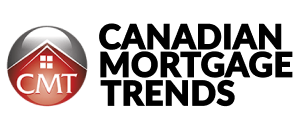Definition:
The rack rate is the full, published price for a product or service, particularly in the hospitality and travel industries. It represents the standard rate at which a hotel, airline, or other service provider advertises their offerings before any discounts, promotions, or special rates are applied. The rack rate is often used as a benchmark for pricing, but it is typically negotiable, and customers rarely pay the full rack rate.
How the rack rate works
In the context of hotels, the rack rate is the price a guest would pay for a room if they booked it without any discounts or special offers. This rate is typically displayed publicly, but few customers actually pay the rack rate because:
- Special rates: Hotels often offer discounted rates to frequent guests, corporate clients, or during off-peak times.
- Promotions: Hotels may offer packages or seasonal promotions that lower the effective rate.
- Online travel agencies (OTAs): Platforms like Expedia, Booking.com, or hotels’ own websites may offer lower rates than the rack rate through special deals or member discounts.
While the rack rate is the maximum price, the actual amount paid is often lower, depending on the negotiation or the availability of discounts.
Why the rack rate is important
The rack rate serves several purposes for both businesses and consumers:
- Pricing benchmark: It establishes a baseline price for the service or product being offered. It helps businesses set a starting point for negotiating rates and offers a standard for comparison.
- Revenue management: For businesses, especially in the hotel and airline industries, the rack rate helps with dynamic pricing strategies. During high-demand periods, companies may raise the rack rate to take advantage of market conditions, while offering discounts or lower rates during slow periods to attract customers.
- Perceived value: Sometimes, companies use the rack rate as a marketing tool, making their services appear to have a higher value, knowing that customers may not pay the full price. This can create a sense of urgency or exclusivity when a discount is offered.
The rack rate in the hotel industry
In hotels, the rack rate is particularly important because it’s often used as a starting point for other pricing decisions:
- Discounted rates: Most guests will not pay the rack rate, and discounts are often offered based on loyalty, group bookings, or special deals.
- Corporate or negotiated rates: Hotels frequently provide lower rates to businesses, large groups, or travel agents, which are typically below the rack rate.
- Online discounts: Hotels may partner with online travel agencies to offer discounted rates through their platforms, typically much lower than the rack rate.
Rack rate in the airline industry
For airlines, the rack rate is the published price for a ticket before any discounts, promotional fares, or frequent flyer miles are applied. However:
- Dynamic pricing: Airlines frequently adjust ticket prices based on demand, and customers rarely pay the rack rate. Factors such as timing, seasonality, and seat availability all influence the final ticket price.
- Frequent flyer programs: Airline loyalty programs offer points and discounts that lower the effective price for frequent customers, often well below the rack rate.
- Promotions and sales: Airlines regularly run sales and promotions, which can significantly reduce the price from the rack rate.
Is the rack rate the price you pay?
In most cases, no. The rack rate is rarely what a customer will pay. Discounts, promotions, and special offers often provide substantial savings compared to the rack rate:
- Negotiated rates: Customers who have a corporate relationship with the service provider, or those booking multiple rooms or services, may receive rates well below the rack rate.
- Promotions: Many travel companies and hotels run sales that offer discounts off the rack rate, especially during off-peak seasons.
- Membership benefits: Many customers can access reduced rates through memberships, loyalty programs, or credit card benefits.
The role of the rack rate in pricing strategy
The rack rate plays a key role in a business’s overall pricing strategy:
- Maximizing revenue: By setting a high rack rate, businesses can offer discounts and create the perception of a deal while still ensuring that the discounted rates meet revenue targets.
- Price comparison: It provides customers with a clear point of comparison when evaluating prices, even if they don’t pay the full rate.
- Perception of value: Businesses may use the high rack rate as a way to position their offerings as premium products, which helps with marketing and branding strategies.
How to find the best price
To avoid paying the rack rate, consider these tips:
- Book in advance: Hotels and airlines often offer discounts for customers who book early.
- Check loyalty programs: Sign up for loyalty programs that offer discounted rates or special member perks.
- Use discount sites: Travel booking websites like Expedia or Hotels.com often feature special rates that are lower than the rack rate.
- Look for sales and promotions: Keep an eye out for seasonal sales, holiday promotions, or last-minute deals that offer substantial savings compared to the rack rate.
Last modified: November 11, 2024



